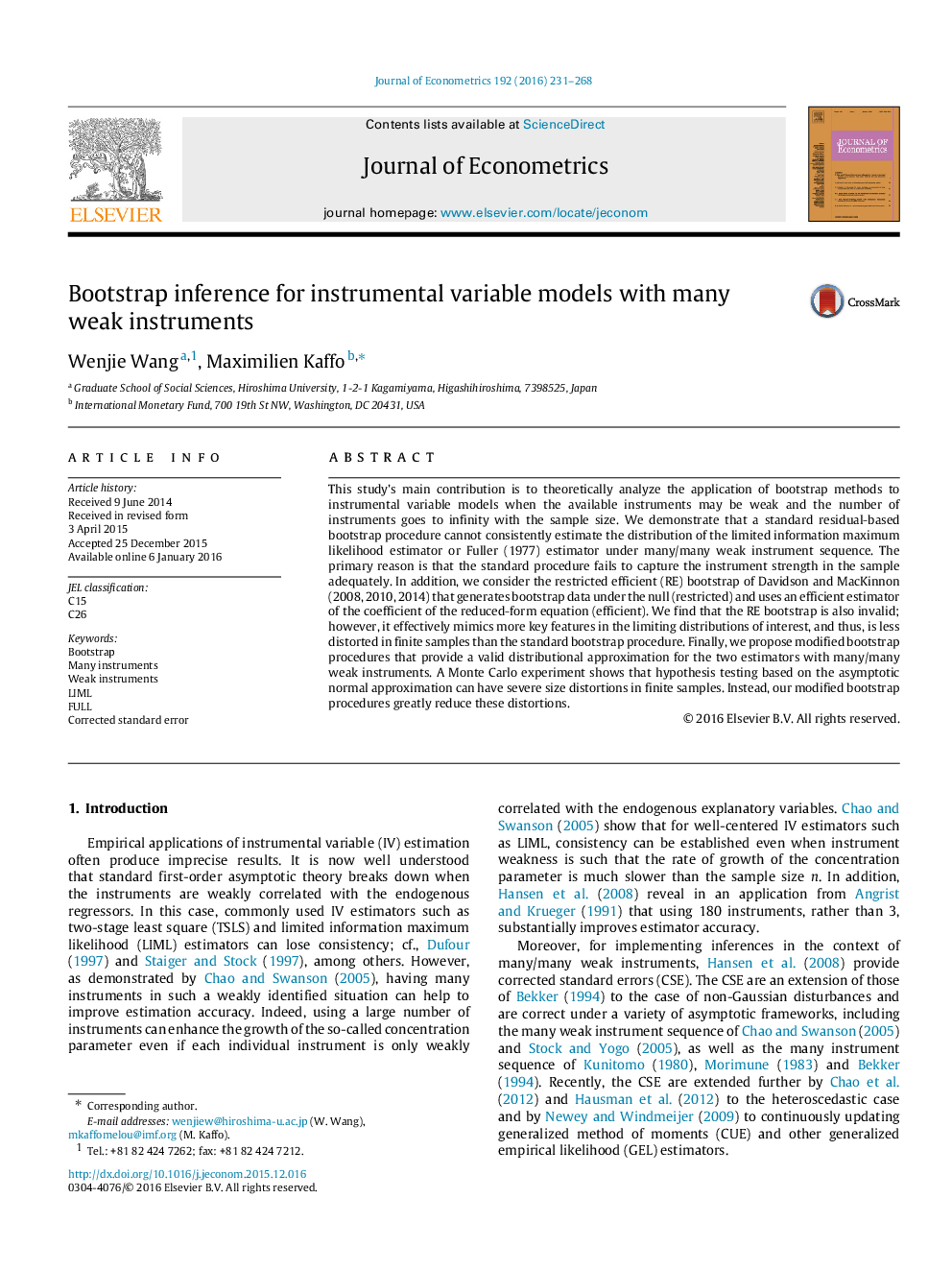| Article ID | Journal | Published Year | Pages | File Type |
|---|---|---|---|---|
| 5095599 | Journal of Econometrics | 2016 | 38 Pages |
Abstract
This study's main contribution is to theoretically analyze the application of bootstrap methods to instrumental variable models when the available instruments may be weak and the number of instruments goes to infinity with the sample size. We demonstrate that a standard residual-based bootstrap procedure cannot consistently estimate the distribution of the limited information maximum likelihood estimator or Fuller (1977) estimator under many/many weak instrument sequence. The primary reason is that the standard procedure fails to capture the instrument strength in the sample adequately. In addition, we consider the restricted efficient (RE) bootstrap of Davidson and MacKinnon (2008, 2010, 2014) that generates bootstrap data under the null (restricted) and uses an efficient estimator of the coefficient of the reduced-form equation (efficient). We find that the RE bootstrap is also invalid; however, it effectively mimics more key features in the limiting distributions of interest, and thus, is less distorted in finite samples than the standard bootstrap procedure. Finally, we propose modified bootstrap procedures that provide a valid distributional approximation for the two estimators with many/many weak instruments. A Monte Carlo experiment shows that hypothesis testing based on the asymptotic normal approximation can have severe size distortions in finite samples. Instead, our modified bootstrap procedures greatly reduce these distortions.
Related Topics
Physical Sciences and Engineering
Mathematics
Statistics and Probability
Authors
Wenjie Wang, Maximilien Kaffo,
